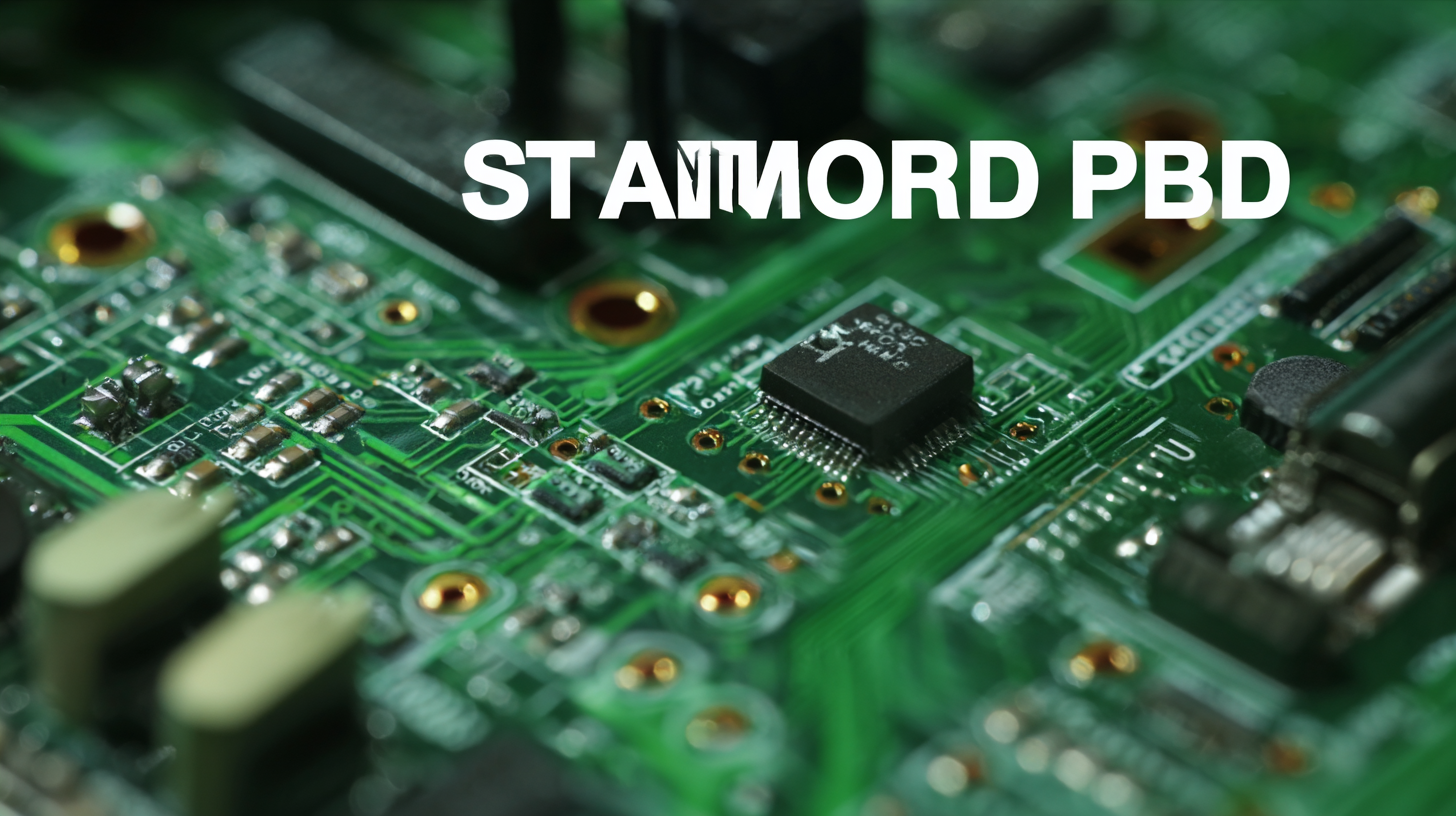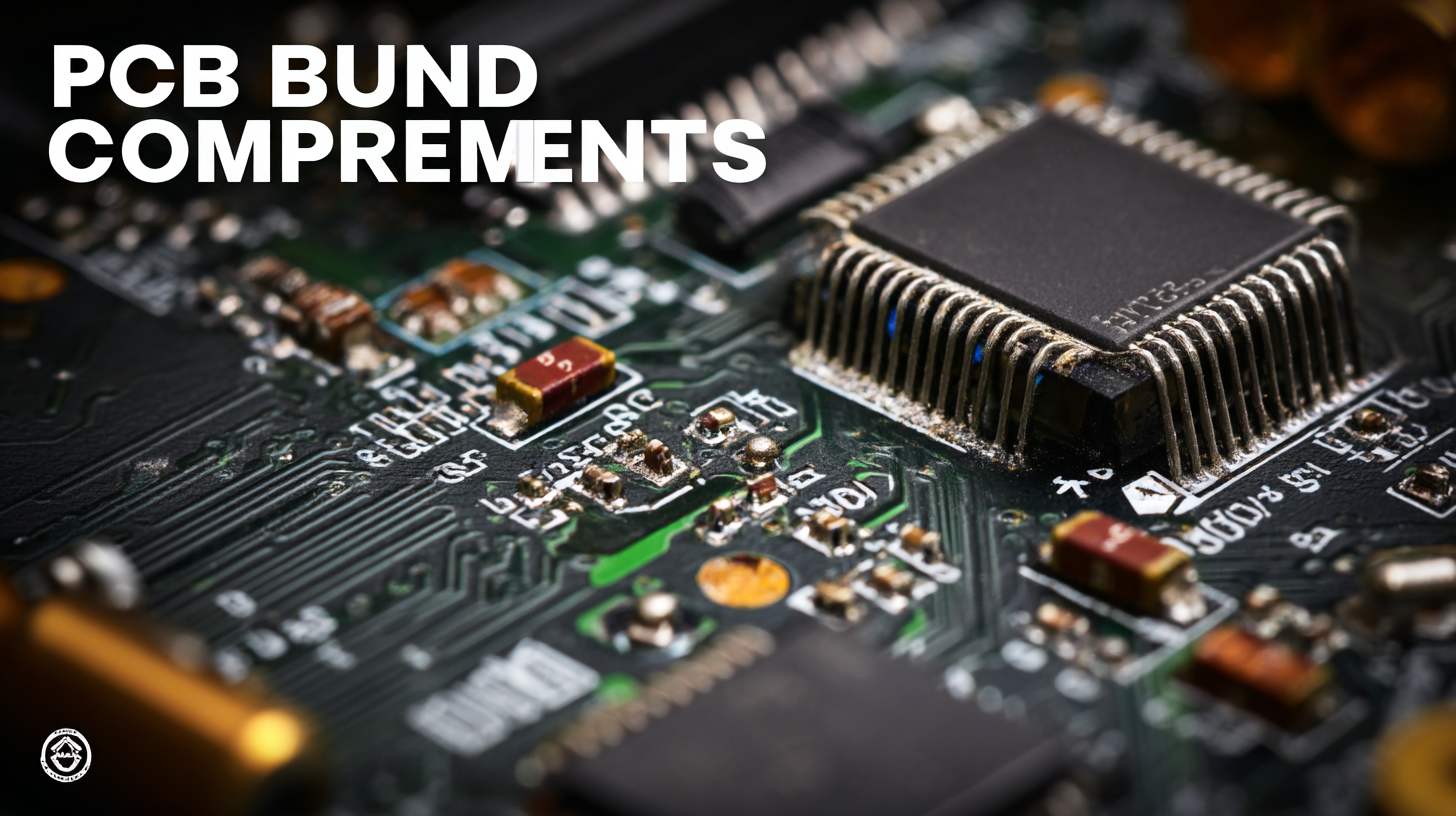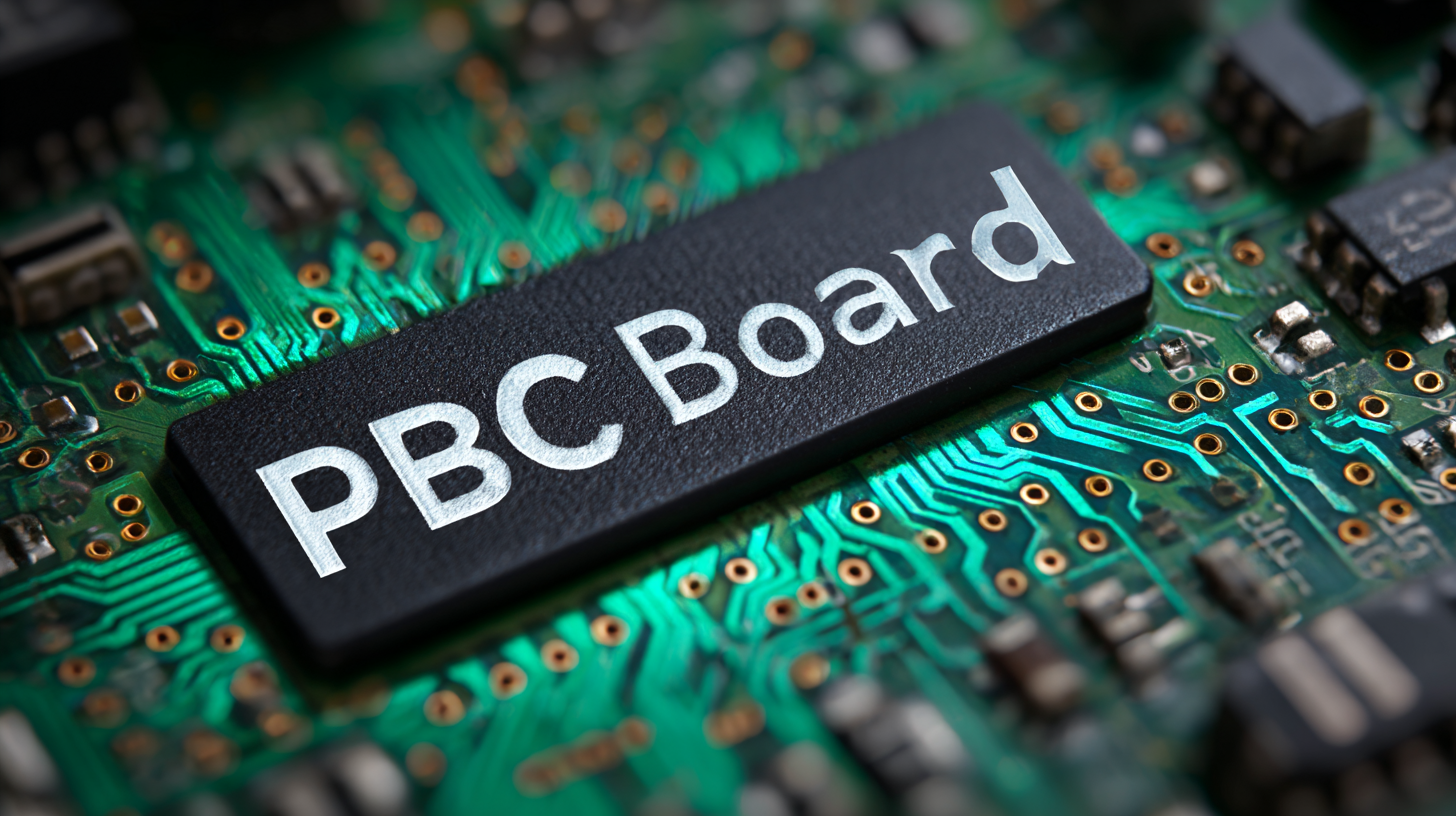- PCB Assembly
- PCB Fab
- Resources
- Company
- Blog
Understanding Industry Production Standards for Optimal Best Pcb Board Components Performance
 In the rapidly evolving landscape of electronics, understanding the industry production standards for optimal performance of PCB board components has become crucial for manufacturers and designers alike. The significance of PCB board components extends beyond mere functionality; they serve as the backbone of countless applications across various sectors, from consumer electronics to industrial automation. By delving into specific industry case studies, we can illuminate the real-world implications of adhering to these standards, highlighting both success stories and lessons learned.
Additionally, this blog will provide practical insights and strategies—collectively referred to as the "How to" guide—to ensure that your PCB board components not only meet but exceed the required specifications. Embracing these principles will ultimately lead to enhanced efficiency, reliability, and performance in electronic devices, thereby driving innovation in an increasingly competitive marketplace.
In the rapidly evolving landscape of electronics, understanding the industry production standards for optimal performance of PCB board components has become crucial for manufacturers and designers alike. The significance of PCB board components extends beyond mere functionality; they serve as the backbone of countless applications across various sectors, from consumer electronics to industrial automation. By delving into specific industry case studies, we can illuminate the real-world implications of adhering to these standards, highlighting both success stories and lessons learned.
Additionally, this blog will provide practical insights and strategies—collectively referred to as the "How to" guide—to ensure that your PCB board components not only meet but exceed the required specifications. Embracing these principles will ultimately lead to enhanced efficiency, reliability, and performance in electronic devices, thereby driving innovation in an increasingly competitive marketplace.
Understanding PCB Production Standards: Key Metrics and Guidelines for Quality Components
When it comes to achieving optimal performance from your PCB (Printed Circuit Board) components, understanding the production standards is crucial. Key metrics such as layer count, trace width, and spacing heavily influence the overall quality and reliability of the PCB. Keeping these factors in check ensures that the components will function as intended, minimizing the risk of malfunctions that could arise from non-compliance with industry standards.
**Tip:** Always verify the design specifications against established ANSI/IPC standards for PCB fabrication to ensure compliance. This helps to create a blueprint that accurately reflects the necessary performance criteria.
Quality control measures, including stringent testing procedures and regular audits, are pivotal in maintaining these standards. Implementing a systematic approach to monitor each stage of the production process can significantly enhance the quality of the final product.
**Tip:** Collaborate closely with your PCB manufacturer to understand their quality assurance protocols and ensure they are in alignment with your production standards. This proactive communication can prevent future discrepancies and enhance the overall performance of your PCB components.
Understanding PCB Production Standards
The Role of Material Selection in PCB Performance: Industry Recommendations and Best Practices
The selection of materials in PCB (Printed Circuit Board) production is paramount to achieving optimal performance and reliability. Different materials exhibit varying electrical, thermal, and mechanical properties, which can significantly influence the effectiveness of PCB components. For instance, high-frequency applications often require substrates like Rogers or Teflon, which provide lower dielectric losses compared to traditional FR-4 materials. Manufacturers must be aware of the specific requirements of their applications to choose the right materials that not only meet industry standards but also enhance board performance.
Industry recommendations emphasize the importance of understanding the compatibility of selected materials with the intended environment and application. Factors such as thermal coefficients, moisture absorption, and chemical resistance should guide material selection. Additionally, best practices suggest thorough testing and validation of components under expected operational conditions. This diligence ensures the durability of the PCB, reduces the likelihood of failures, and ultimately leads to higher customer satisfaction. By prioritizing material selection as a critical factor in the design process, manufacturers can achieve not only compliance with production standards but also superior performance in their PCB assemblies.
Evaluating PCB Assembly Processes: Standards for Optimal Component Integration
 In the realm of PCB assembly, adhering to industry production standards is crucial for achieving optimal component integration. Reports suggest that approximately 70% of PCB defects stem from assembly issues, emphasizing the need for stringent evaluation of assembly processes. The IPC-A-610 and IPC-J-STD-001 are widely recognized standards that outline the quality expectations for electronic assemblies. These standards ensure proper soldering techniques and alignment of components, which are essential for reducing failure rates and enhancing the overall reliability of the PCB.
In the realm of PCB assembly, adhering to industry production standards is crucial for achieving optimal component integration. Reports suggest that approximately 70% of PCB defects stem from assembly issues, emphasizing the need for stringent evaluation of assembly processes. The IPC-A-610 and IPC-J-STD-001 are widely recognized standards that outline the quality expectations for electronic assemblies. These standards ensure proper soldering techniques and alignment of components, which are essential for reducing failure rates and enhancing the overall reliability of the PCB.
Moreover, advancements in automation and inspection technologies have significantly influenced PCB assembly processes. A recent study by the IPC indicates that implementing automated optical inspection (AOI) can reduce the likelihood of defects by up to 30%. This shift towards automated processes not only speeds up production but also enhances accuracy in component placement. As the complexity of PCBs continues to rise with advancements in technology, staying compliant with established standards while leveraging modern tools is vital for manufacturers aiming for optimal component integration and performance in their products.
Testing and Validation Standards in PCB Production: Ensuring Reliability and Performance
In the world of printed circuit board (PCB) production, testing and validation standards play a crucial role in ensuring the reliability and performance of components. These standards provide a framework for assessing the functionality and durability of PCB designs under various operational conditions. By adhering to rigorous testing protocols, manufacturers can identify potential vulnerabilities that may compromise the integrity of a PCB over time.
Component performance is not merely about meeting the specified electrical attributes; it encompasses thermal management, signal integrity, and mechanical robustness. Testing standards, such as IPC-A-600 for visual inspection and IPC-9162 for performance evaluation, serve as benchmarks that guide manufacturers in achieving optimal results. Through meticulous validation processes, including stress testing and environmental assessments, manufacturers can ensure that their PCBs not only perform effectively but also withstand the rigors of the environments in which they will operate.
Ultimately, a commitment to comprehensive testing and validation can significantly enhance the quality of PCB production. This dedication not only cultivates customer trust but also positions manufacturers to thrive in a competitive market by delivering products that meet or exceed industry expectations for reliability and performance.
Future Trends in PCB Standards: Adapting to Emerging Technologies and Industry Shifts
As the electronics industry continues to evolve, PCB standards are undergoing significant transformations to accommodate emerging technologies. Innovations such as 5G communication and IoT devices are pushing manufacturers to rethink their approach to production standards. To keep pace, companies must stay informed about the latest developments and adopt flexible manufacturing processes that can adapt to new technologies. This proactive strategy not only ensures compliance with evolving standards but also enhances overall product reliability.

Tips: Invest in training programs for your engineering team to understand new materials and design techniques that align with modern PCB standards. Regular workshops focusing on the impact of new technologies can foster a culture of innovation and agility within your organization.
Additionally, embracing automation in PCB assembly lines can streamline operations and improve compliance with updated standards. Automation not only boosts efficiency but also reduces human error, which is crucial as component complexity increases. By integrating smart technology into manufacturing processes, companies can better position themselves to respond to the industry’s rapid changes.
Tips: Consider implementing a digital quality assurance system that utilizes real-time data analytics to monitor production quality against industry standards. This will provide valuable insights and help in making informed decisions quickly.
Phone
 WhatsApp
WhatsAppEmail
Offer Electronics Manufacturing All-in-One
PCBONLINE® is a registered trademark or service mark of pcb online limited or its affiliates.
Copyright © 2001-2024 Pcb Online Limited. All rights reserved